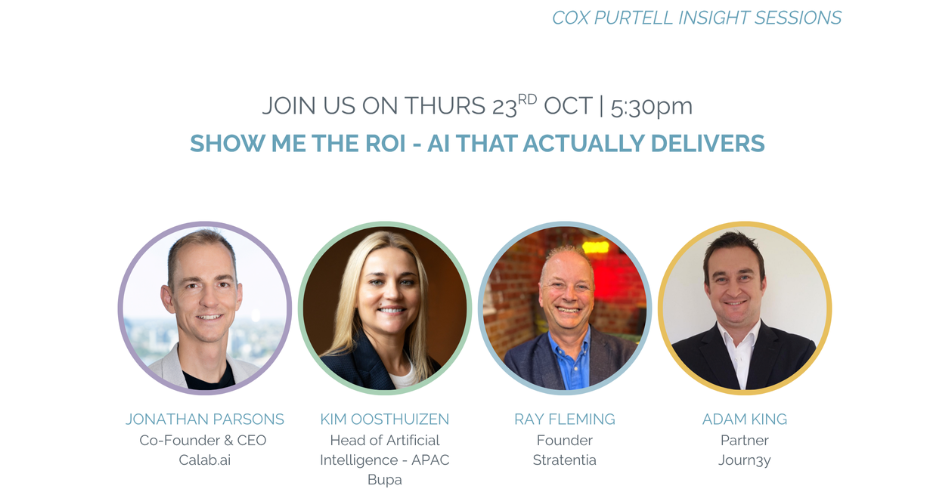Dashboard

Let’s be honest: there are a lot of recruiters out there who can talk tech - but can’t actually recruit in it. They’ll use the right words, nod at the right acronyms, and still somehow send you a “DevOps engineer” who’s never touched Terraform. Or a “data scientist” who’s never worked outside Excel. Or a “senior developer” who’s never owned a release. This is more than just an annoyance - it’s a liability. Because in high-performance tech environments, a weak hire doesn’t just cost you money - they cost you momentum . If you’re building or scaling in custom development, cloud, or data, you need a recruitment partner who understands what a good hire actually looks like - not just on paper, but in code, in architecture, in delivery, and in the way they show up for your team. Here are 7 questions that will help you figure out if your recruiter is one of the few who gets it - or just another CV dispatcher with a LinkedIn license. 1. How does this role fit into the rest of the stack? If your recruiter can’t explain how this person supports or unblocks the team around them, they’re not close enough to the work. A data engineer working upstream of analytics needs to structure pipelines a certain way. A cloud engineer managing infrastructure-as-code needs to account for how developers deploy into that environment. A backend dev who’s touching APIs needs to understand version control, dependencies, and testing culture. If your recruiter doesn’t ask those questions up front, they’re playing buzzword bingo - not building capability. 2. Where do we lose candidates in this market - and why? Senior devs, data engineers, cloud architects - they don’t apply. They don’t wait around. And they definitely don’t have time for five-stage interview processes run by HR. If your recruiter can’t tell you where candidates are dropping off - or how to fix it - they’re not managing your process. They’re just observing it. Good recruiters know how to sequence interviews, keep top candidates warm, and position your opportunity with urgency, clarity, and credibility. That’s the difference between a hire and a near-miss. 3. Which skills are non-negotiable - and how do you qualify that? You don’t just need someone who’s “touched” AWS. You need someone who understands IaC, can write clean, modular Terraform, and knows when to flag risks before they hit production. You don’t need a data analyst who lists Python - you need one who can write reusable scripts, build pipelines that don’t collapse under load, and explain outputs to a product owner without slipping into jargon. A good recruiter probes. A great one pushes back. They’ll ask you: is that skill truly critical - or can we coach for it? And how are we testing for it? 4. What salary flashpoints are shifting right now? Markets move. Fast. If your recruiter isn’t warning you that senior cloud engineers are being poached on six-figure contracts - or that analytics talent is being pulled into product-led orgs with better tooling and tighter feedback loops - you’ll lose good people without ever knowing why. Good recruiters help you anticipate movement before it hits. They don’t just take your budget - they help you protect it. 5. What roles do candidates confuse this with - and how do you navigate that? This is a huge signal of whether your recruiter is a partner or a passenger. Ask them: how often do you see candidates apply for this kind of role without understanding it? How do you redirect those people without damaging brand perception? What’s your strategy for educating the market on who we actually need? If they can’t answer that, they’re not protecting your process - or your time. 6. What red flags do you screen out before we waste time? If your recruiter can’t name three instant deal-breakers, they’re not qualifying properly. They should be filtering out: Backend devs who say “full-stack” but haven’t touched a frontend framework since 2020 Cloud engineers who’ve never managed infrastructure directly “Data people” who can’t explain how their work changed a business outcome Project managers who can’t articulate stakeholder pressure, critical path, or tech debt trade-offs You’re not paying for volume - you’re paying for filtration. 7. How do you spot the 1%ers - not just the qualified? Here’s where capability comes in. Anyone can spot someone who ticks boxes. But only an experienced recruiter will notice the subtle, behavioural signals that scream impact player. You know the type: They don’t just complete tickets - they rewrite poor requirements They don’t escalate late - they escalate early, with context They manage up, mentor sideways, and make others better by being on the team They know when to compromise - and when to hold the line These people rarely shout. They rarely sell themselves well. They show up through patterns. And if your recruiter can’t see those patterns, they’ll miss them. Final Word: Tech Hiring Is Capability Hiring If your recruiter can’t talk fluently about architecture, delivery pressure, platform fragility, cloud cost blowout, or stakeholder alignment - they can’t help you build a great team. Anyone can send you a résumé. Not everyone can protect your delivery pipeline. So next time you brief a role in cloud, dev, or data, don’t just hand it over and hope. Ask better questions. Expect sharper answers. Work with people who get it. Want a recruiter who can see what a candidate’s really made of - before you waste your team’s time? Let’s talk. Book a 15-minute no-fluff hiring review – reach out to myself , James , Rupert or Craig

The holiday season is one of the busiest times of the year for businesses, with staff taking leave and workloads peaking. Managing seasonal demand without the right support can be a challenge, but temporary workers can be your secret weapon. From Christmas recruitment to end-of-year projects, hiring temporary staff helps businesses maintain productivity, meet deadlines, and keep teams motivated - all while providing flexibility and cost-effective staffing solutions. 1. Flexibility to Meet Seasonal Demands Temporary workers provide the flexibility businesses need during the festive season. Whether it’s covering staff on annual leave, handling seasonal spikes, or supporting last-minute projects, hiring temporary staff ensures your business stays on track. 2. Boost Productivity and Team Morale Overworked permanent staff can struggle during peak periods. Bringing in seasonal workers helps maintain productivity and keeps your core team motivated, ensuring deadlines are met without unnecessary stress. 3. Access New Skills and Expertise Temporary staff often bring specialised skills or fresh perspectives. Seasonal hires can streamline processes, support specialised roles, or introduce innovative ideas that permanent teams may not have considered. 4. Cost-Effective Seasonal Staffing Hiring temporary workers for the holiday period is often more cost-effective than paying overtime or rushing permanent recruitment. It allows businesses to maintain performance while managing staffing budgets efficiently. 5. Quick and Smooth Onboarding with a Recruitment Partner Partnering with a recruitment agency makes it easy to find the right temporary staff. Experienced recruiters ensure seasonal workers are onboarded quickly and ready to contribute from day one, minimising disruption and maximising efficiency. Don’t let the holiday season disrupt your business operations. By strategically hiring temporary workers, companies can maintain productivity, keep teams motivated, and navigate seasonal staffing challenges with ease. If you’re planning your Christmas recruitment strategy or looking for temporary staff for the festive period, now is the perfect time to connect with a trusted recruitment partner who can help you find the right people at the right time.

Somewhere along the way, job hunting became an exercise in sending things into the void. You polish your CV, upload it to a job site or job board, click “submit,” and wait. Maybe you get an auto response. Maybe you don’t. Then… silence. The irony? The most powerful way to break that silence has been sitting in your pocket the whole time. The telephone - that thing we now mostly use for scrolling or texting - is still one of the best tools in recruitment. And yet, barely anyone uses it. The Lost Art of the Phone Call Between LinkedIn messages, chatbots, and job portals, recruitment has become incredibly digital. Candidates are hesitant to pick up the phone, often worried they’ll be interrupting or sound awkward. Recruiters are guilty of this too - relying on email templates instead of having a proper chat. But when you do make that call, everything changes. Suddenly, you’re not just another name in an inbox. You’re a voice, a person, and a potential match. It’s a human connection, and it’s memorable. Why It Works When you speak to someone, even for a minute or two, you can communicate far more than a CV ever could. Enthusiasm, personality, curiosity, they all come across instantly. As a recruiter, I can tell you firsthand that I remember the candidates I’ve spoken to. The ones who call to introduce themselves, ask smart questions, or follow up after applying are far more likely to get noticed. The phone lets you: Build rapport fast. Clarify what you’re looking for (and what the role actually involves). Get immediate feedback instead of waiting days for an email. Show initiative (which every employer values). When and How to Call Timing matters. Avoid first thing Monday morning as not much can happen over a weekend, or right before the close of business, as recruiters are usually in the thick of it. Mid-morning or mid-afternoon is the sweet spot. Also, don’t call right after you click ‘submit’, recruiters will usually designate time to go through their advert responses per day so if you haven’t heard anything in 24 hours, call them up. Keep it simple. You don’t need a script. A quick intro, a clear purpose, and a friendly tone go a long way: “Hi, I saw your advert for the [role]. I’ve applied online, but just wanted to introduce myself as I think my experience in [area] could really fit what you’re after.” That’s it. You’ve instantly lifted yourself out of the digital crowd. If you’re following up after sending your CV, a short, polite check-in works wonders: “Hi [Recruiter’s Name], just wanted to touch base to see if you’ve had a chance to review my application for [role]. Happy to share any extra details if it helps.” You’d be surprised how often that one call prompts someone to pull up your CV straight away. From the Recruiter’s Side Recruiters want to place the right person - fast. A phone conversation tells us a lot: communication style, confidence, professionalism, and enthusiasm. Those things don’t show up in bullet points. And while not every call leads to a job, it does something arguably just as important - it builds a relationship. A good recruiter will remember you and keep you in mind for other roles. That’s how most great placements actually happen. The Takeaway Job boards and AI tools may have changed how we find roles, but the human voice still cuts through. A short, confident phone call can turn you from another online applicant into someone who’s front of mind. So next time you hit “apply,” don’t stop there. Pick up the phone. The difference between being seen and being overlooked might just be one conversation.

In a world where everything is increasingly automated how do we ensure human connection isn’t lost? I am old enough to have gone backpacking before Wi-Fi and smart phones, clutching a Lonely Planet book with notes and tips made from other travellers. Keeping in touch with home was a weekly internet café session where I’d write a few emails home. I left my phone at home for 3 months when I went to South America in 2010. That is just incomprehensible now. The friendships I made on that trip stand today and the two Sydneysiders I met in Brazil 15 years ago played a huge part in my decision to stay here. I also had nearly a year travelling the world before moving to Australia (6 years later) and it was a different experience; people sat around on their phones in the hostels and you could arrange everything instantly. I still believe this benefit didn’t outweigh the missed connections. Is it easier to conduct your interview via Teams? It is easier for you to not grab a coffee with the candidates you’ve placed or had on interviews? Yes, but do you miss nuance, rapport, trust and everything that goes with that. Don’t get me wrong, tech and AI play a great part in efficiencies and the ability to do a lot of things quicker, but quicker isn’t always better or right. You’d be surprised even in this job the number of times candidates have said to me “the recruiter refused to meet me face to face and insisted it was on Teams”. Personally, I make an effort to see people face to face where possible and this has a positive effect on my work as well as everything else. Candidate and client referrals don’t come from Teams meetings. There is so much evidence outside of the work context of the physical, emotional and health benefits of human connection, how are you still incorporating this? - Amy Colton amyc@coxpurtell.com.au

The AI hype machine is still going strong. Every week another shiny new tool promises to “revolutionise” the way we work. But for executives who must sign off the budget, hype isn’t enough. They want one thing, proof it works. The problem is that too many AI initiatives fizzle out somewhere between a flashy demo and a confusing post-implementation report. Globally, and especially in Australia, adoption has been slower than expected, and failure rates higher than anyone would like to admit. It’s not because AI lacks potential. It’s because many organisations buy into a vision without a clear path to measurable ROI. Too often, vendors overpromise. Internal teams under-plan. And executives are left holding the bill for something that hasn’t delivered the promised value. The ROI Gap The gap between AI’s promise and its performance usually boils down to four things: · Poor adoption strategies – rolling out technology without clear business objectives. · Lack of measurable ROI metrics – impressive dashboards don’t always equal value. · Regulatory and privacy roadblocks – legal complexity slows down what should be fast wins. · Change fatigue in the workforce – the human side of AI rollouts gets ignored. In short, success isn’t about finding the fanciest AI solution. It’s about implementing the right solution well. From Concept to Commercial Impact This October, we’re bringing together some of the most experienced operators in the AI space for a brutally practical conversation on what works. Our next Cox Purtell Insight Session: “Show Me the ROI – AI That Actually Delivers” is built for executives, not engineers. No hype. No magic beans. Just straight talk from leaders who’ve implemented AI at scale and can tell you where the real wins (and landmines) are. Our panel includes senior leaders with deep experience across leading complex AI rollouts inside massive organisations and know exactly how to make these projects stick. You’ll hear candid insights on: · Strategic & Responsible Adoption: Build vs buy decisions and what to consider. · Governance & Regulations: Navigating regulatory and privacy hurdles without losing momentum. · Adoption & Workforce Impacts: Rolling out without breaking everything else. · Measuring ROI: Cost savings, revenue growth, customer engagement, and other metrics that matter Not Another AI Sales Pitch This isn’t a “how to use ChatGPT” tutorial or a vendor parade. It’s a space for decision-makers—C-suite leaders, HR directors, CFOs, heads of department—to unpack how AI can be evaluated, measured, and adopted responsibly to drive genuine business outcomes. And because we believe in making a real-world impact, $20 from every attendee ticket will go to The Kids’ Cancer Project, helping fund vital research across Australia. Join Us · Event: Show Me the ROI – AI That Actually Delivers · Date: Thursday, 24 October 2025 · Time: 5:30 PM – 8 PM · Location: Sydney CBD · Register your interest here and join a conversation that cuts through the noise. Because in 2025, AI doesn’t just need to be clever. It needs to deliver.






